
Cormorants rest on sandstone seacliffs above the ocean. Likely Brandts and double-crested cormorants.
Species: Cormorants, Phalacrocorax
Location: La Jolla, California
Image ID: 18345
Species: Cormorants, Phalacrocorax
Location: La Jolla, California
Image ID: 18345

Desert agave, also known as the Century Plant, blooms in spring in Anza-Borrego Desert State Park. Desert agave is the only agave species to be found on the rocky slopes and flats bordering the Coachella Valley. It occurs over a wide range of elevations from 500 to over 4,000. It is called century plant in reference to the amount of time it takes it to bloom. This can be anywhere from 5 to 20 years. They send up towering flower stalks that can approach 15 feet in height. Sending up this tremendous display attracts a variety of pollinators including bats, hummingbirds, bees, moths and other insects and nectar-eating birds.
Species: Desert agave, Agave deserti
Image ID: 11550
Species: Desert agave, Agave deserti
Image ID: 11550

La Jolla Cliffs overlook the ocean with thousands of cormorants, pelicans and gulls resting and preening on the sandstone cliffs. Sunrise with pink skies.
Location: La Jolla, California
Image ID: 20254
Location: La Jolla, California
Image ID: 20254

La Jolla Cliffs overlook the ocean with thousands of cormorants, pelicans and gulls resting and preening on the sandstone cliffs.
Location: La Jolla, California
Image ID: 20256
Location: La Jolla, California
Image ID: 20256

Sun Gold Point Reef Exposed at Extreme Low Tide, La Jolla, California.
Location: La Jolla, California
Image ID: 37984
Location: La Jolla, California
Image ID: 37984

Bird Rock Reef Exposed at Extreme Low Tide, La Jolla, California.
Location: Bird Rock, La Jolla, California
Image ID: 37993
Panorama dimensions: 5578 x 13879
Location: Bird Rock, La Jolla, California
Image ID: 37993
Panorama dimensions: 5578 x 13879

Bird Rock Reef Exposed at Extreme Low Tide, La Jolla, California.
Location: La Jolla, California
Image ID: 38010
Location: La Jolla, California
Image ID: 38010

Sun Gold Point Reef Exposed at Extreme Low Tide, La Jolla, California.
Location: La Jolla, California
Image ID: 38012
Location: La Jolla, California
Image ID: 38012

Aerial Panoramic Photo of Bird Rock and La Jolla Coast, with surfers in the waves. Pacific Beach and Mission Beach are to the far right (south). La Jolla's Mount Soledad rises in the center. The submarine reefs around Bird Rock are visible through the clear water. This extremely high resolution panorama will print 80 inches high by 200 inches wide.
Location: La Jolla, California
Image ID: 30778
Panorama dimensions: 7948 x 20303
Location: La Jolla, California
Image ID: 30778
Panorama dimensions: 7948 x 20303

Booby Birds and Clipperton Rock, Lagoon, Clipperton Island.
Location: Clipperton Island, France
Image ID: 33083
Location: Clipperton Island, France
Image ID: 33083

Booby Birds and Clipperton Rock, Lagoon, Clipperton Island.
Location: Clipperton Island, France
Image ID: 33086
Location: Clipperton Island, France
Image ID: 33086

Rockhopper penguin portrait, showing the yellowish plume feathers that extend behind its red eye in adults. The western rockhopper penguin stands about 23" high and weights up to 7.5 lb, with a lifespan of 20-30 years.
Species: Rockhopper penguin, Western rockhopper penguin, Eudyptes chrysocome, Eudyptes chrysocome chrysocome
Location: New Island, Falkland Islands, United Kingdom
Image ID: 23722
Species: Rockhopper penguin, Western rockhopper penguin, Eudyptes chrysocome, Eudyptes chrysocome chrysocome
Location: New Island, Falkland Islands, United Kingdom
Image ID: 23722

Desert agave, also known as the Century Plant, blooms in spring in Anza-Borrego Desert State Park. Desert agave is the only agave species to be found on the rocky slopes and flats bordering the Coachella Valley. It occurs over a wide range of elevations from 500 to over 4,000. It is called century plant in reference to the amount of time it takes it to bloom. This can be anywhere from 5 to 20 years. They send up towering flower stalks that can approach 15 feet in height. Sending up this tremendous display attracts a variety of pollinators including bats, hummingbirds, bees, moths and other insects and nectar-eating birds.
Species: Desert agave, Agave deserti
Image ID: 11551
Species: Desert agave, Agave deserti
Image ID: 11551
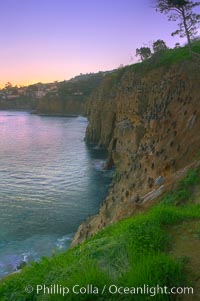
La Jolla Cliffs overlook the ocean with thousands of cormorants, pelicans and gulls resting and preening on the sandstone cliffs. Sunrise with pink skies.
Location: La Jolla, California
Image ID: 20253
Location: La Jolla, California
Image ID: 20253

Sea lions, cormorants, gulls and pelicans rest on a sandstone rock above the ocean.
Location: La Jolla, California
Image ID: 20255
Location: La Jolla, California
Image ID: 20255

Aerial Panoramic Photo of Bird Rock and La Jolla Coast.
Location: La Jolla, California
Image ID: 30787
Panorama dimensions: 7955 x 22392
Location: La Jolla, California
Image ID: 30787
Panorama dimensions: 7955 x 22392

Birdrock Coastline at extreme low King Tide, La Jolla, California, aerial photo.
Location: La Jolla, California
Image ID: 38069
Location: La Jolla, California
Image ID: 38069
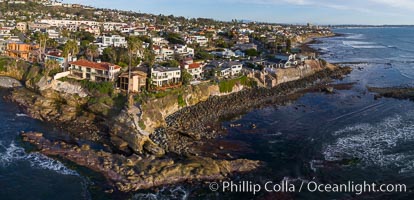
Birdrock Coastline at extreme low King Tide, La Jolla, California, aerial photo.
Location: La Jolla, California
Image ID: 38070
Location: La Jolla, California
Image ID: 38070

Rockhopper penguins, on rocky coastline of New Island in the Falklands. True to their name, rockhopper penguins scramble over the rocky intertidal zone and up steep hillsides to reach their nesting colonies which may be hundreds of feet above the ocean, often jumping up and over rocks larger than themselves. Rockhopper penguins reach 23" and 7.5lb in size, and can live 20-30 years. They feed primarily on feed on krill, squid, octopus, lantern fish, molluscs, plankton, cuttlefish, and crustaceans.
Species: Rockhopper penguin, Western rockhopper penguin, Eudyptes chrysocome, Eudyptes chrysocome chrysocome
Location: New Island, Falkland Islands, United Kingdom
Image ID: 23744
Species: Rockhopper penguin, Western rockhopper penguin, Eudyptes chrysocome, Eudyptes chrysocome chrysocome
Location: New Island, Falkland Islands, United Kingdom
Image ID: 23744

Rockhopper penguins, on rocky coastline of New Island in the Falklands. True to their name, rockhopper penguins scramble over the rocky intertidal zone and up steep hillsides to reach their nesting colonies which may be hundreds of feet above the ocean, often jumping up and over rocks larger than themselves. Rockhopper penguins reach 23" and 7.5lb in size, and can live 20-30 years. They feed primarily on feed on krill, squid, octopus, lantern fish, molluscs, plankton, cuttlefish, and crustaceans.
Species: Rockhopper penguin, Western rockhopper penguin, Eudyptes chrysocome, Eudyptes chrysocome chrysocome
Location: New Island, Falkland Islands, United Kingdom
Image ID: 23742
Species: Rockhopper penguin, Western rockhopper penguin, Eudyptes chrysocome, Eudyptes chrysocome chrysocome
Location: New Island, Falkland Islands, United Kingdom
Image ID: 23742
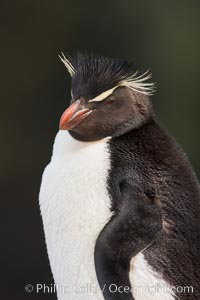
Rockhopper penguin portrait, showing the yellowish plume feathers that extend behind its red eye in adults. The western rockhopper penguin stands about 23" high and weights up to 7.5 lb, with a lifespan of 20-30 years.
Species: Rockhopper penguin, Western rockhopper penguin, Eudyptes chrysocome, Eudyptes chrysocome chrysocome
Location: New Island, Falkland Islands, United Kingdom
Image ID: 23724
Species: Rockhopper penguin, Western rockhopper penguin, Eudyptes chrysocome, Eudyptes chrysocome chrysocome
Location: New Island, Falkland Islands, United Kingdom
Image ID: 23724

Rockhopper penguin. This juvenile has not yet developed the yellowish plume feathers that extend behind its red eye in adults. The western rockhopper penguin stands about 23" high and weights up to 7.5 lb, with a lifespan of 20-30 years.
Species: Rockhopper penguin, Western rockhopper penguin, Eudyptes chrysocome, Eudyptes chrysocome chrysocome
Location: New Island, Falkland Islands, United Kingdom
Image ID: 23725
Species: Rockhopper penguin, Western rockhopper penguin, Eudyptes chrysocome, Eudyptes chrysocome chrysocome
Location: New Island, Falkland Islands, United Kingdom
Image ID: 23725

Rockhopper penguin portrait, showing the yellowish plume feathers that extend behind its red eye in adults. The western rockhopper penguin stands about 23" high and weights up to 7.5 lb, with a lifespan of 20-30 years.
Species: Rockhopper penguin, Western rockhopper penguin, Eudyptes chrysocome, Eudyptes chrysocome chrysocome
Location: New Island, Falkland Islands, United Kingdom
Image ID: 23726
Species: Rockhopper penguin, Western rockhopper penguin, Eudyptes chrysocome, Eudyptes chrysocome chrysocome
Location: New Island, Falkland Islands, United Kingdom
Image ID: 23726
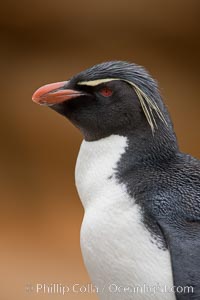
Rockhopper penguin portrait, showing the yellowish plume feathers that extend behind its red eye in adults. The western rockhopper penguin stands about 23" high and weights up to 7.5 lb, with a lifespan of 20-30 years.
Species: Rockhopper penguin, Western rockhopper penguin, Eudyptes chrysocome, Eudyptes chrysocome chrysocome
Location: New Island, Falkland Islands, United Kingdom
Image ID: 23723
Species: Rockhopper penguin, Western rockhopper penguin, Eudyptes chrysocome, Eudyptes chrysocome chrysocome
Location: New Island, Falkland Islands, United Kingdom
Image ID: 23723

Rockhopper penguin. This juvenile has not yet developed the yellowish plume feathers that extend behind its red eye in adults. The western rockhopper penguin stands about 23" high and weights up to 7.5 lb, with a lifespan of 20-30 years.
Species: Rockhopper penguin, Western rockhopper penguin, Eudyptes chrysocome, Eudyptes chrysocome chrysocome
Location: New Island, Falkland Islands, United Kingdom
Image ID: 23727
Species: Rockhopper penguin, Western rockhopper penguin, Eudyptes chrysocome, Eudyptes chrysocome chrysocome
Location: New Island, Falkland Islands, United Kingdom
Image ID: 23727
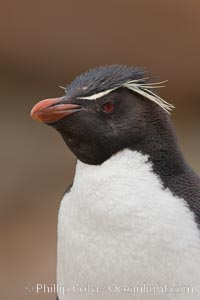
Rockhopper penguin portrait, showing the yellowish plume feathers that extend behind its red eye in adults. The western rockhopper penguin stands about 23" high and weights up to 7.5 lb, with a lifespan of 20-30 years.
Species: Rockhopper penguin, Western rockhopper penguin, Eudyptes chrysocome, Eudyptes chrysocome chrysocome
Location: New Island, Falkland Islands, United Kingdom
Image ID: 23728
Species: Rockhopper penguin, Western rockhopper penguin, Eudyptes chrysocome, Eudyptes chrysocome chrysocome
Location: New Island, Falkland Islands, United Kingdom
Image ID: 23728
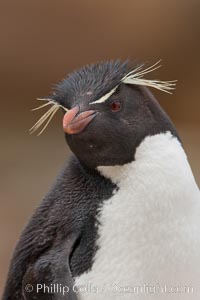
Rockhopper penguin portrait, showing the yellowish plume feathers that extend behind its red eye in adults. The western rockhopper penguin stands about 23" high and weights up to 7.5 lb, with a lifespan of 20-30 years.
Species: Rockhopper penguin, Western rockhopper penguin, Eudyptes chrysocome, Eudyptes chrysocome chrysocome
Location: New Island, Falkland Islands, United Kingdom
Image ID: 23729
Species: Rockhopper penguin, Western rockhopper penguin, Eudyptes chrysocome, Eudyptes chrysocome chrysocome
Location: New Island, Falkland Islands, United Kingdom
Image ID: 23729

Rockhopper penguin portrait, showing the yellowish plume feathers that extend behind its red eye in adults. The western rockhopper penguin stands about 23" high and weights up to 7.5 lb, with a lifespan of 20-30 years.
Species: Rockhopper penguin, Western rockhopper penguin, Eudyptes chrysocome, Eudyptes chrysocome chrysocome
Location: New Island, Falkland Islands, United Kingdom
Image ID: 23730
Species: Rockhopper penguin, Western rockhopper penguin, Eudyptes chrysocome, Eudyptes chrysocome chrysocome
Location: New Island, Falkland Islands, United Kingdom
Image ID: 23730

Rockhopper penguin portrait, showing the yellowish plume feathers that extend behind its red eye in adults. The western rockhopper penguin stands about 23" high and weights up to 7.5 lb, with a lifespan of 20-30 years.
Species: Rockhopper penguin, Western rockhopper penguin, Eudyptes chrysocome, Eudyptes chrysocome chrysocome
Location: New Island, Falkland Islands, United Kingdom
Image ID: 23731
Species: Rockhopper penguin, Western rockhopper penguin, Eudyptes chrysocome, Eudyptes chrysocome chrysocome
Location: New Island, Falkland Islands, United Kingdom
Image ID: 23731

Rockhopper penguin portrait, showing the yellowish plume feathers that extend behind its red eye in adults. The western rockhopper penguin stands about 23" high and weights up to 7.5 lb, with a lifespan of 20-30 years.
Species: Rockhopper penguin, Western rockhopper penguin, Eudyptes chrysocome, Eudyptes chrysocome chrysocome
Location: New Island, Falkland Islands, United Kingdom
Image ID: 23732
Species: Rockhopper penguin, Western rockhopper penguin, Eudyptes chrysocome, Eudyptes chrysocome chrysocome
Location: New Island, Falkland Islands, United Kingdom
Image ID: 23732